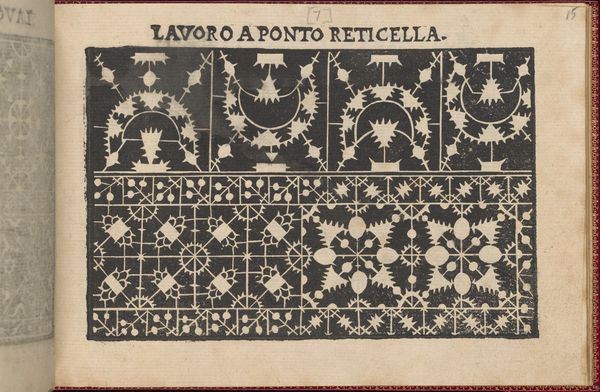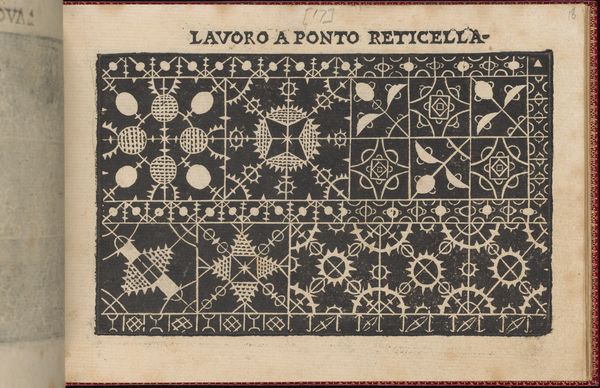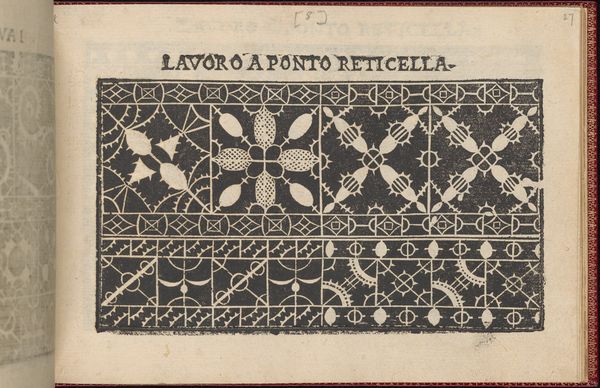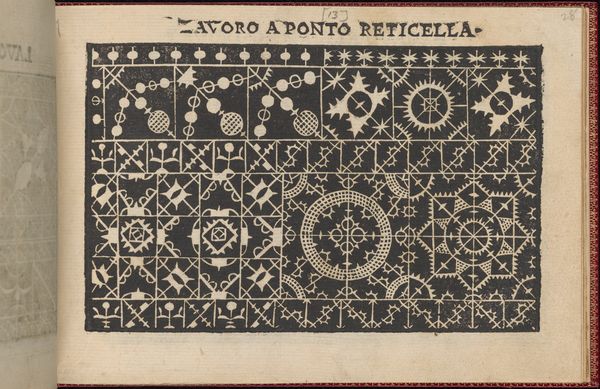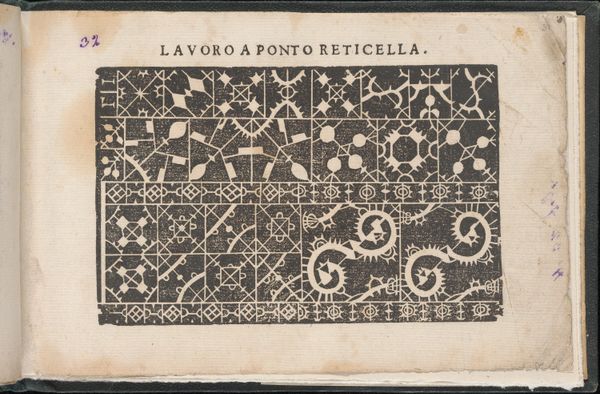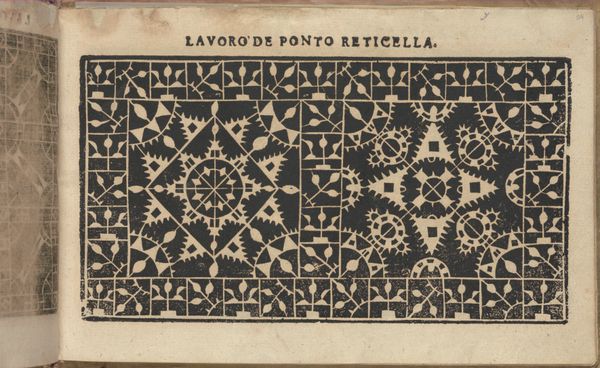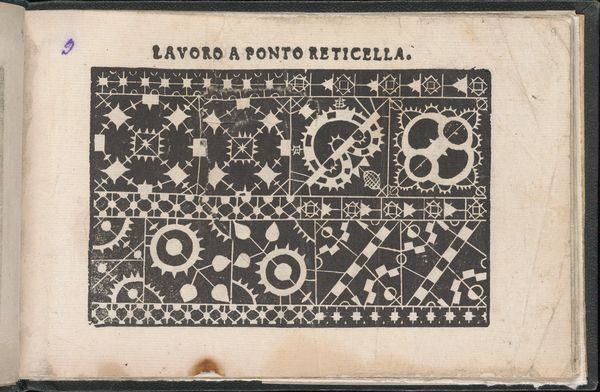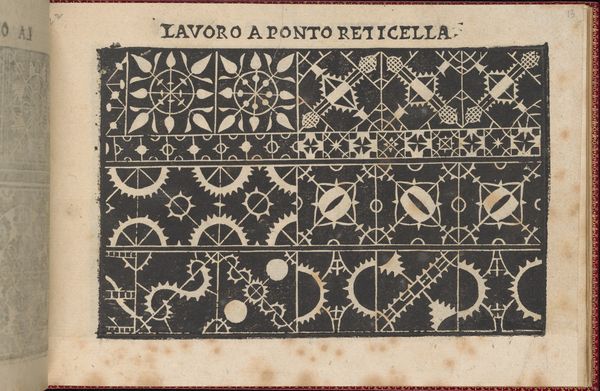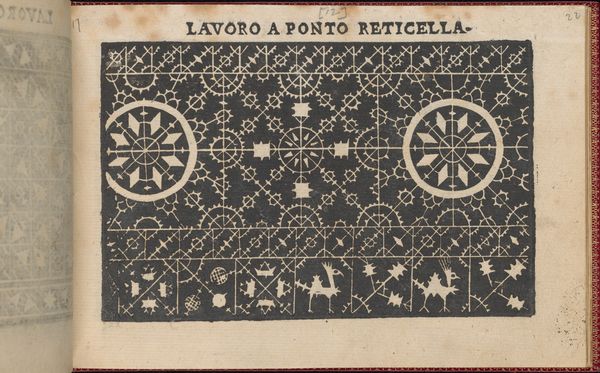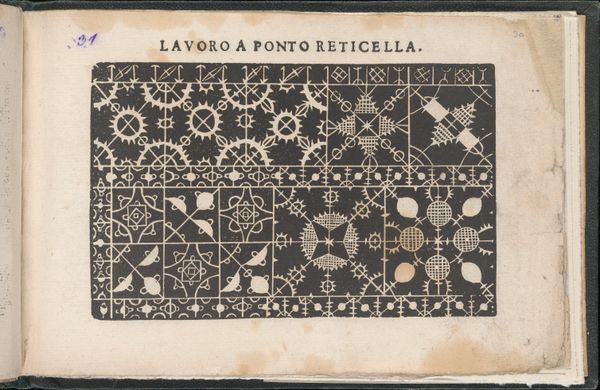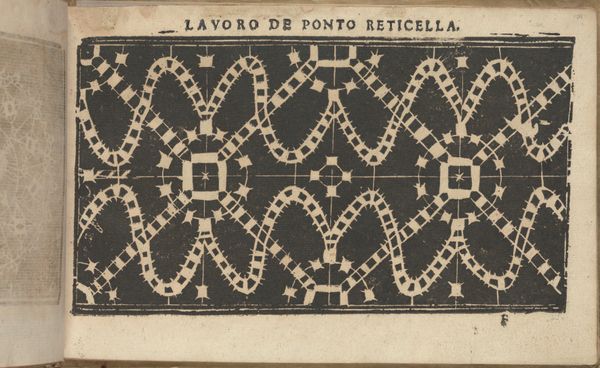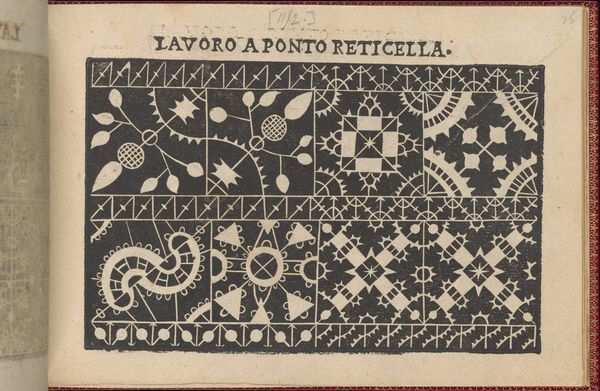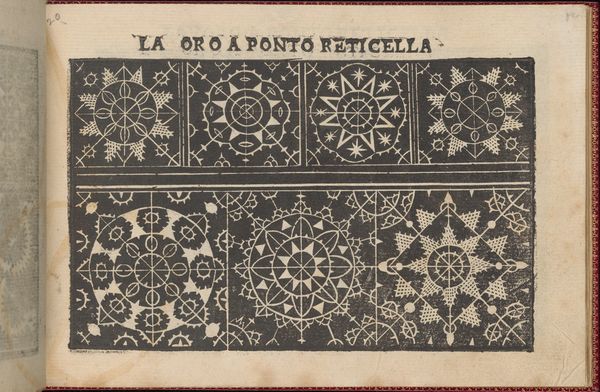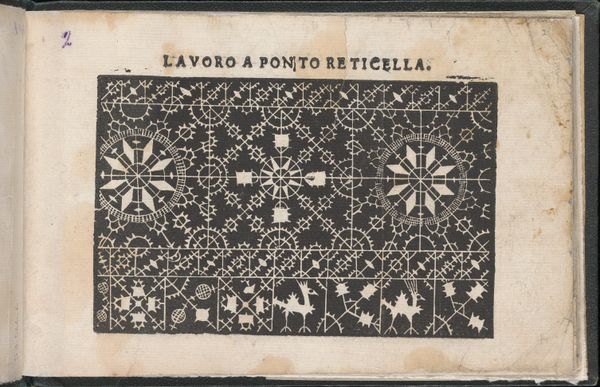
Pretiosa Gemma delle virtuose donne, page 25 (recto) 1600
0:00
0:00
drawing, print, paper, engraving
#
drawing
# print
#
paper
#
geometric
#
line
#
italian-renaissance
#
engraving
Dimensions: Overall: 4 3/4 x 6 11/16 in. (12 x 17 cm)
Copyright: Public Domain
Curator: This engraving, created around 1600, is page 25 from Isabella Catanea Parasole’s book, "Pretiosa Gemma delle virtuose donne," now held at the Metropolitan Museum of Art. The title translates to "Precious Gem for Virtuous Women." Editor: My immediate reaction is that it's deceptively simple. At first glance, it seems like basic geometry, but the longer I look, the more I see a complex interplay of positive and negative space, laboriously rendered by hand. Curator: Absolutely. The geometric designs are indeed at the core of the image, but consider its cultural purpose: This book provided patterns for women to create reticella lace. The geometric forms aren’t just aesthetic; they are instructional, loaded with cultural significance around female virtue and skill. Editor: That changes things. Knowing that it was functional design for a specific craft opens up new avenues for investigation. Who were these "virtuous women" and what kind of labor was involved in the process of creating this lace? Curator: Renaissance Italian society placed high value on female artistry, linking needlework with qualities of patience, modesty, and domesticity. The act of replicating these patterns becomes a ritualistic embodiment of those values. Editor: And the materials themselves - paper, ink, thread - all playing their own part. It's fascinating to consider the value placed on these ephemeral objects versus the labor that was invested into making them. Also how the means of print making affected production of needlework, not vice versa. Curator: Think, too, of the symbolism inherent in each motif. The squares, circles, and stars weren't randomly selected; they carried allegorical meanings accessible to contemporary viewers. It’s almost like a secret visual language. Editor: Almost like code, or even a score. The act of translating the designs from the page into lace transformed them again, embedding the cultural coding of their time and material labor into something functional, decorative, wearable. Curator: It beautifully captures the intertwined threads of art, culture, and social expectations during the Renaissance. Editor: Precisely. The simplicity becomes richer with the added layer of what the materials, production process, and symbolism tell us about the women and world in which it was created.
Comments
No comments
Be the first to comment and join the conversation on the ultimate creative platform.
